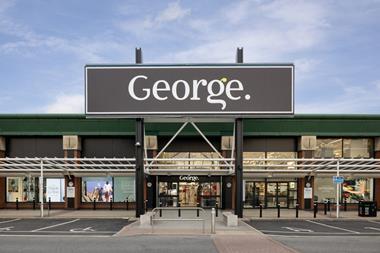
There has never been a more exciting time to be involved in retail media. In Europe, the Interactive Advertising Bureau (IAB) predicts retail media will overtake traditional linear TV by 2026, when spend in the category reaches €25bn.
That story is true globally. Recent data published by the IAB found retail media was one of the fastest-growing US advertising channels. More than half of advertisers who intended to increase spend in the category this year are planning to do so by pulling funds from other channels: social, search, digital video, linear TV, print and out of home.
But to sustain this growth, the industry must constantly find ways to improve and address pain points for its stakeholders. Key to that is reimagining the relationship between retailer and brand. Retailers have become accustomed to having power over suppliers, expecting them to hand over cash year after year regardless of media performance. To unlock incremental brand pounds and dollars, retailers must act more like media agencies and treat supplier brands more like clients.
And that’s where transparency comes in. Retailers have historically been too cautious in sharing when something hasn’t performed as well as hoped. But there is opportunity in these cases. Retailers and brands can best learn together when they experiment, honestly discuss campaign performance and double down on winning strategies to increase return on ad spend from increased product sales.
With good data, retailers and their media networks can repeat successful strategies, driving long-term incremental advertising income for the retailer and sales for the brand.
This year, calls for greater measurement standards have been amplified, as the rapidly growing ad category looks to achieve that sustainable growth and show its value. Luckily, there is progress on the horizon. The IAB and Media Rating Council (MRC) earlier this month released retail media measurement guidelines for public comment. These guidelines were created with the input of some of the biggest global retailers, brands and retail media networks.
It’s fantastic to see the IAB leading the charge to bring standards to the industry. Frankly, it’s desperately needed when there are now more than 600 global retail media networks, and brands look to evaluate campaign performance to make the most well-informed investments.
Much of the conversation to date has focused on the need for more digital standards, especially in the US, which has only just begun considering the store as the next frontier of retail media. There is plenty of room to adjust and standardise how digital retail media is measured between retailers, but the fact is, around 80% of shoppers still purchase at bricks & mortar.
True, effective and impactful retail media is omnichannel. As such, the approach to standardisation across retail media should be multifaceted, addressing standards online and in stores.
There is also the question of methodology: how do networks measure campaign effectiveness across stores when variables such as store size, layout, merchandising, promotions and post-campaign cycles exist? At SMG, we’ve focused efforts on building out PlanApps, a commerce marketing operating system that allows brands and retailers to close the gap between data and action.
Not only does it seem as if every retailer has a varied methodology, there is also an array of naming conventions for the same touchpoints across retailers, making it difficult for brands to compare results. There’s a job to be done in standardising terminology and how terms should compare between retailers.
In the 56-page proposal, the IAB and MRC take a stab at in-store standards. They, for example, suggest dividing stores into zones – departments or other designated areas – that will help standardise in-store audience targeting. They also recommend greater in-store data validation, including regular in-store audits, the use of third-party validation services, real-time monitoring systems, data validation protocols and the regular calibration and maintenance of data collection devices.
The idea here is that data collected in-store is accurate, credible, representative and transparent across networks. All of this is an excellent starting point to ensure in-store data is standardised, transparent and treated as importantly as e-commerce data across retail media networks.
As the industry continues to push ahead, transparency and greater measurement standards are key to ensuring continued growth in retail media –as well as positive relationships between retailer, brand and consumer. Just don’t forget shoppers are omnichannel, and decisions about in-store retail media are just as important as those that impact digital. Omnichannel problems require omnichannel solutions.



















No comments yet